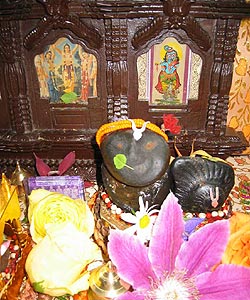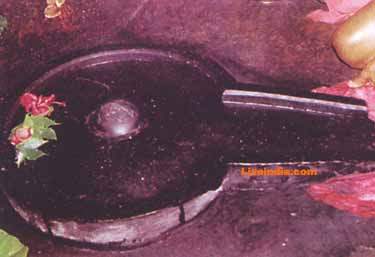Although the Purusha Sukta in the Rig Veda firmly establishes a notion of creation from a primordial human male, Indic tradition has always considered animist and aniconic representations of deities superior to what the Bible calls "graven" images.
Indeed, there is considerable evidence that 'Hindu' deities were rarely depicted in human form prior to the emergence of Buddhism and Jainism
Indeed, there is considerable evidence that 'Hindu' deities were rarely depicted in human form prior to the emergence of Buddhism and Jainism
- There is very minimal description of the physical form of deities in the Vedas. If at all a description was made, attention was drawn to their essential non-human nature e.g. exotic colour of skin, presence of multiple eyes (only eyes, never heads or limbs), animal motifs, abstract imagery etc.
- In practice, most ancient shrines either worshipped nature directly e.g. rivers, trees, cows, etc. or had natural geological formations in their sanctum sanctorum,
e.g. all the jyotirlingas and most shakti peethas are natural uncarved rock, whereas the rest of the shakti peethas worship interesting phenomena such as underground river (Kamakhya, Assam), natural gas flares (Jwalamukhi, Himachal Pradesh), cinnabar (HgS) deposits (Hingalaj, Pakistan) - Even in the case of Vaishnavism, worship of ammonite fossils (shaligrama) was and still remains superior to 'murti' (icon/idol) worship

Two Shaligrama stones. The indentations on the central stone resemble a smiling face, while the ammonite shell patterns are clearly visible on the stone on the right. - This aversion to the depiction of God in human form is also especially visible in the so called 'village deities' and famous temples of tribal/rural origin such as Jagannatha Temple, Puri

Hanuman, Lambhvel, Gujarat- typical 'swayambhu' murti. The columns are solid gold.





No comments:
Post a Comment